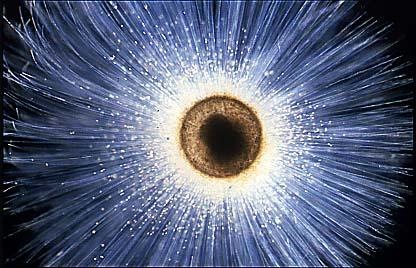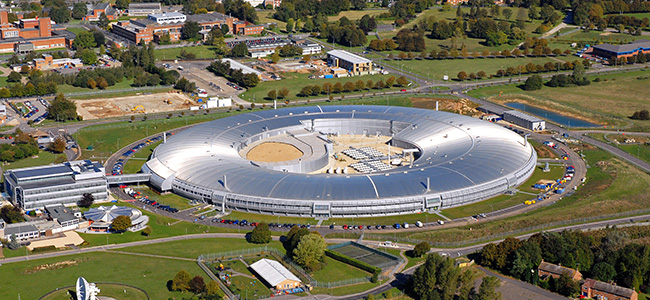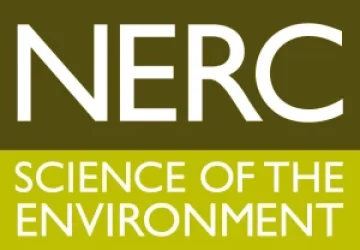I’m Lil, a 1st year PhD student based at the downtown department in Cambridge and at Diamond Light Source. Thats not a picture of me doing any science, thats a picture of me having fun, which PhD students do sometimes.
I’m looking at climatic paleoproxies and how they can be refined, in order to be better understand out planet’s past climate, and hopefully know a little more about what could happen in the future.
So how is this done? In order to look at the past climate, we have to use something called a proxy, as we don’t have thermometer measurements from the last million years! A proxy takes a set of variables, say a chemical ratio, and relates it to a past climatic condition, such as temperature.

The next thing to consider, is where the proxies come from. Much of my work uses foraminifera, a type of marine, calcitic plankton (the picture is what the foraminifera Orbulina universa looks like living in the water column). Common practice of using foraminifera in paleoclimate research is to look at oxygen isotopes, or magnesium/calcium ratios to deduce past ocean temperatures over millions of years.
So far, so good. But where does my research fit into this? I’m using X-ray techniques to refine the proxies that we use. The X-rays are generated by a synchrotron, I’m mainly using Diamond Light Source, and can be tuned to certain energies to look at specific things. The X-rays act as a light source, allowing me to see features at very high resolution. Not only can I look at the shape of things, but I can also investigate the chemistry too.

So what is an average day like? After preparing and selecting samples in Cambridge, I take them to Diamond Light source for analysis. A day at Diamond is typically long, but very rewarding! For creating 3D images, I fire X-rays at a sample, and rotate by a tiny fraction of a degree. This works very similar to an X-ray that you would have in hospital if you break a bone, but due to the rotation, a 3D image can be built up. Typically 8000 images per plankton are collected! This takes about 15 minutes, but then I must realign all those images back into a 3D volume which can take me upto 6 hours per plankton. I do this whilst at Diamond Light Source as they have very powerful computers there and I can call on the expertise of others around me. In between all the data analysis, I have lots of cups of tea and food in the canteen.
Back in Cambridge I look at my chemistry data, and think about what it all could mean for plaoeclimate proxies, and the climate of our planet.
Anyway, as they say, here is one I made earlier.


